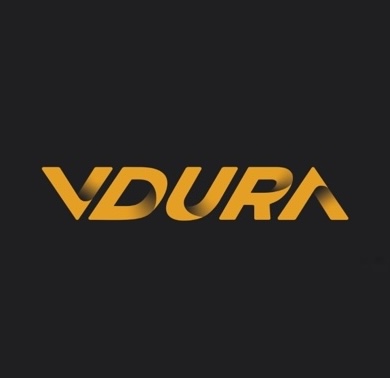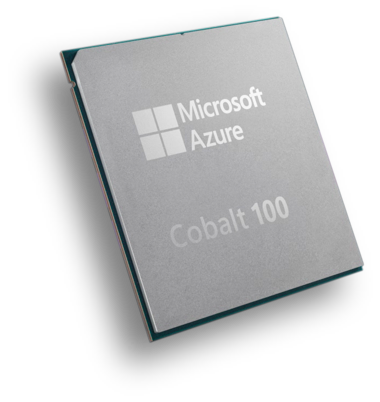It isn’t easy to distill everything that’s happening around the storage industry into a set of concrete predictions. In fact, it’d be folly to try. So what I’ve done here instead is offer up the topics that will set the storage agenda for the coming year. While some of this is technology-driven, much of it is about simplifying the lives of IT practitioners. It’s also about responding to shifting business needs.
Tame Unstructured Data
The rapidly increasing volume of unstructured data overwhelms IT organizations in businesses of every size. It is also throttling nearly every enterprise’s ability to leverage that data to competitive advantage. This is why taming the deluge of unstructured data is a crucial driver of the storage agenda in 2023.
IT and an enterprise’s business stakeholders are equally interested in getting a grip on unstructured data. Understanding that data impacts the effectiveness of the business. It’s hard, after all, to derive value from data if you don’t know what’s in it. At the same time, IT is spending precious budget dollars to store data that may be redundant, or that might be stored more efficiently based on the contents or consumers of the data.
There is plenty of hardware targeted at storing unstructured data. Storage solution vendors include Pure Storage, Dell Technologies, IBM, HPE, Lenovo, NetApp and VAST Data, among others. However, the hardware-based approach is inherently limited to the data the hardware directly controls, lowering the effectiveness of such systems in an enterprise where data is likely to be far more distributed. So a software-first solution is needed.
This year will see the broad adoption of sophisticated tools that bring new capabilities in cataloging and searching unstructured data across the breadth of an organization’s hybrid-cloud infrastructure. Tools for managing unstructured data will rapidly evolve to include enterprise-class security, auditing and compliance features. In addition, these tools will help optimize underlying storage resources and assist in placing data close to the applications that use the data.
Keep an eye on Komprise, a strong player in this space whose name you should know. IBM is another one to watch as it rapidly evolves its Spectrum Discover product. We should also see increased activity in understanding unstructured data from fast movers like VAST Data and Pure Storage. More traditional storage vendors like NetApp, HPE and Dell all talk about unstructured data, but none of these companies are rushing toward a solution that isn’t mapped directly to their existing storage technology. That will start to change in 2023.
Solve Multi-Cloud Complexity
The cloud can deliver significant benefits to an organization that can leverage it properly. Nearly every enterprise uses the public cloud in some way. Many enterprises even utilize more than one public cloud provider. All this cloud usage supplements an IT infrastructure that may also contain edge computing, traditional on-prem infrastructure and consumption-based as-a-service offerings. It’s a complex challenge for IT organizations, and controlling that complexity is a top agenda item for IT storage administrators.
It’s cliché to say that data has gravity, but, like most clichés, it is based on a fundamental truth. Data is expensive to store. It’s expensive and slow to move. It needs to live near the workloads that consume it. And it must be protected at all costs. As a result, managing data across cloud boundaries, where every cloud and storage solution has a different management plane, is taxing, to say the least.
Nearly every traditional storage company has a cloud offering, with NetApp offering one of the most integrated approaches. The company allows its customers to run its ONTAP storage operating system natively on Microsoft Azure, Amazon Web Services and Google Cloud. NetApp offers a seamless experience that is an unquestionable differentiator for the company. Where it falls short is in helping manage non-NetApp storage.
This is a limitation of many storage-first solutions. Managing multi-cloud infrastructure is more than just managing data. Data and workloads are inextricably linked. A successful multi-cloud management solution must understand and account for this, and only a small pool of players are driving innovation in this space.
I’m excited by what Cloudian is doing with its data-first approach to multi-cloud management. Nutanix, while tackling a much broader problem than just multi-cloud management, is rapidly innovating in this space as well. Nutanix also integrates with public cloud providers, as well as with leading as-a-service offerings like HPE GreenLake. Organizations relying on cloud-native solutions should also watch Pure Storage’s Portworx and IBM’s Red Hat OpenShift. All these solutions will gain traction in 2023 as IT organizations attempt to simplify operations in a complex multi-cloud world.
Storage Drives Sustainability Efforts
Adapting IT infrastructure to meet the evolving needs of sustainability is nothing new. This industry has been looking at energy efficiency for a very long time because it impacts the cost of cooling and powering a data center. Efficiency also determines how dense storage can be within a data center. While sustainability is a topic that’s traditionally been about minimizing costs while maximizing utilization, the conversation has shifted to broader policy-based concerns for corporations. In 2023, storage will be a big part of that conversation.
Steve Santamaria, CEO of Folio Photonics, a company playing in the data archive space, recently pointed out that by 2025 data centers will consume more than 3% of the world’s electricity. I was surprised to learn from Santamaria that storage can account for anywhere between 10% and30% of a data center’s energy consumption. Do the math, and you’ll find that storage alone may be responsible for up to 1% of global electricity consumption. That’s huge.
The Storage Networking Industry Association (SNIA) is on the case. The organization, which has representatives from nearly every major storage company, provides standards and recommendations for sustainability in the storage space. In 2023, expect mainstream storage providers to begin embracing SNIA’s Emerald power efficiency measurement specification, part of the group’s Green Storage Initiative.
IT organizations looking to increase sustainability efforts through more intelligent storage architectures have multiple tools to use. QLC flash memory, for example, is more energy efficient than the TLC flash that dominates enterprise-grade flash storage and the mechanical hard drives that dominate mid-tier storage. Adopting more QLC-based storage may quickly impact sustainability in the data center.
Beyond more efficient hardware, there are also more sustainable business models. For example, public cloud providers and hyperscalers can leverage shared resources to lower an enterprise’s overall energy footprint. In addition, as-a-service offerings like HPE GreenLake and Pure Storage’s Evergreen offerings also work towards increased sustainability.
Regardless of how an IT organization pursues sustainability goals, storage will be at the forefront of the conversation in 2023. Given that it’s a technology that consumes up to 1% of the world’s energy, it simply must be.
QLC Replaces (Many) Nearline Hard Disks
There’s a great story to be told about QLC flash. It’s energy efficient. It’s dense. It’s fast. It’s cheaper than TLC flash. Unfortunately, QLC flash is a great technology tempered by one major disadvantage: it has an endurance problem. The good news is that QLC’s endurance problem is being solved, enabling a solution that’s as resilient as TLC-based flash storage and competitive with traditional hard disk drives (HDDs). In 2023, you will see QLC flash storage solutions begin to erode traditional HDD adoption in nearline storage.
IBM and Pure Storage each offer QLC flash-based storage systems. While both companies take a similar approach to overcoming the challenges of QLC, there are major differences in how they implement that approach. IBM embeds intelligence within its FlashCore Modules, the SSD at the heart of its FlashSystem products. I talked to IBM Storage CTO Andy Walls last year about how it all works; you can read about that in the Forbes article I wrote at the time.
Pure Storage also embeds intelligence into its FlashArray//C to enhance the endurance of QLC NAND. The difference is that Pure implements most of this intelligence within FlashArray’s operating system and not within its DirectFlash module. This leads to greater flexibility for Pure and, I assume, a lower cost basis than a more hardware-centric approach would demand.
The QLC NAND industry isn’t sitting still as IBM and Pure demonstrate the worthiness of QLC flash. The SSD manufacturer Solidigm, for example, recently announced QLC SSDs with a capacity of up to 61 TiB. That’s a lot of density.
Traditional storage vendors have primarily ignored QLC flash. Those who haven’t, such as NetApp with its FAS500f QLC-based array, are shipping products that expose the limitations of the technology.
That’s going to change in 2023. QLC is now a viable option for nearline storage, and will replace HDDs in greenfield deployments and as legacy storage replacement cycles occur. Pure Storage and IBM may have a head-start, but everyone else is about to enter this market.
The Analyst’s Take
Data and storage systems are at the heart of every enterprise’s digital transformation efforts. Enterprises need to organize and understand the data being managed while also addressing sustainability and ESG needs. The key to sustainability is the technologies used to store an organization’s data, such as QLC NAND flash.
I’ve just scratched the surface of what will impact enterprise storage over the coming year. The use of storage accelerators, such as Nvidia’s BlueField DPUs, is already changing how we think about storage architecture. Cybersecurity remains everyone’s number one concern, and we’ll see much happening in that space as well. Data is exploding at the edge of the network, and storage needs to be there. It’s a long list, and it will heavily impact IT thinking and spending in 2023.




